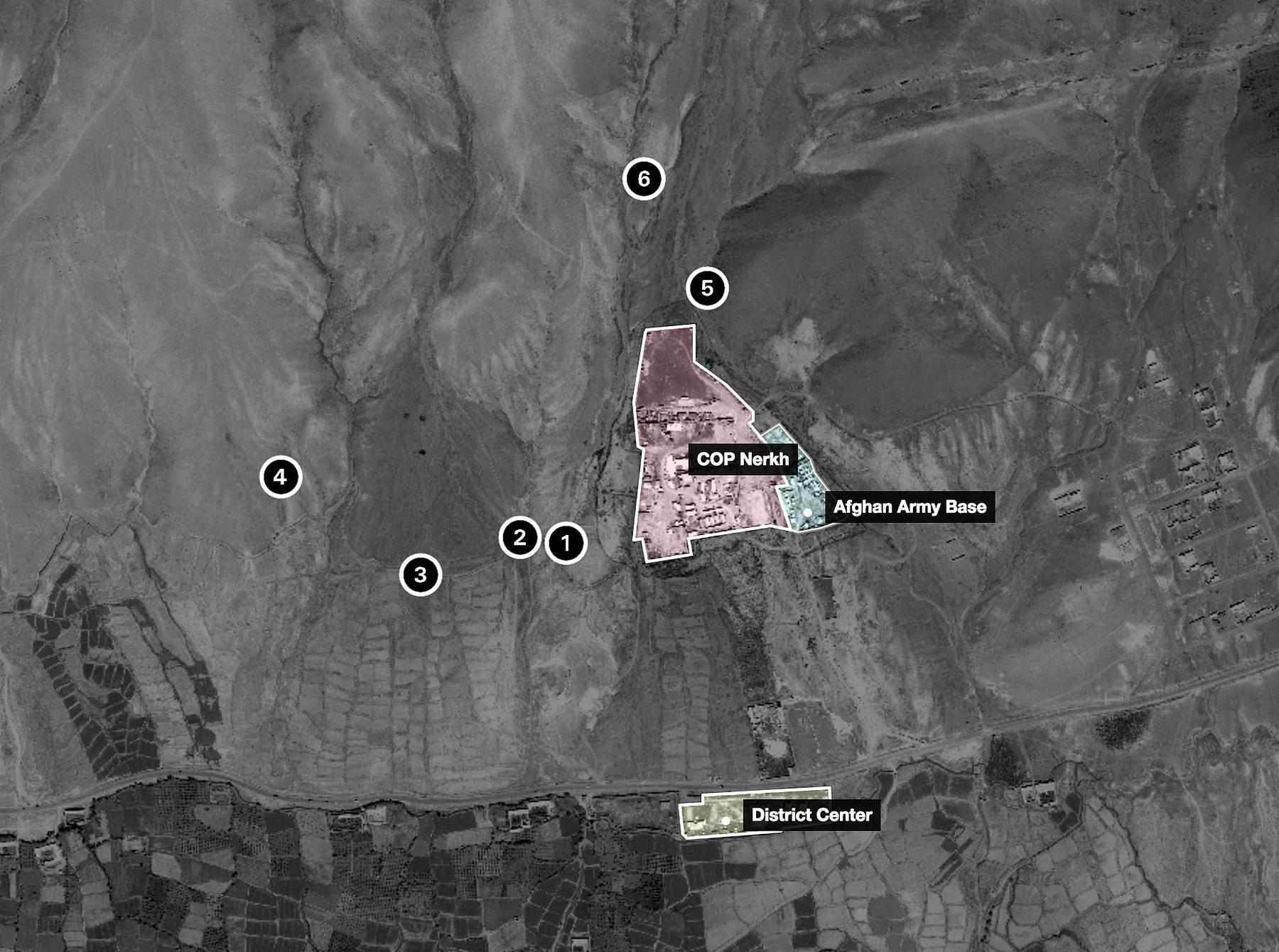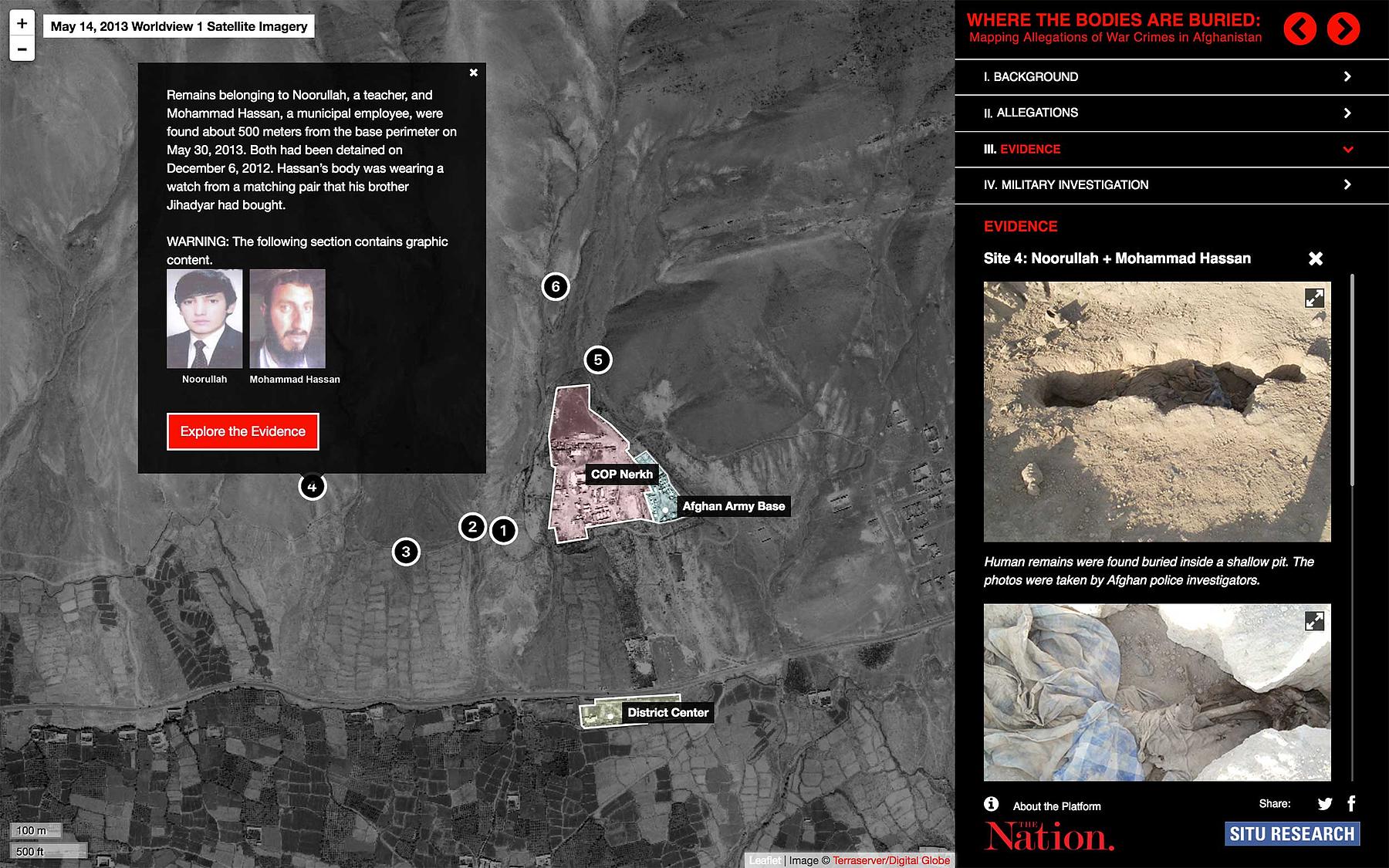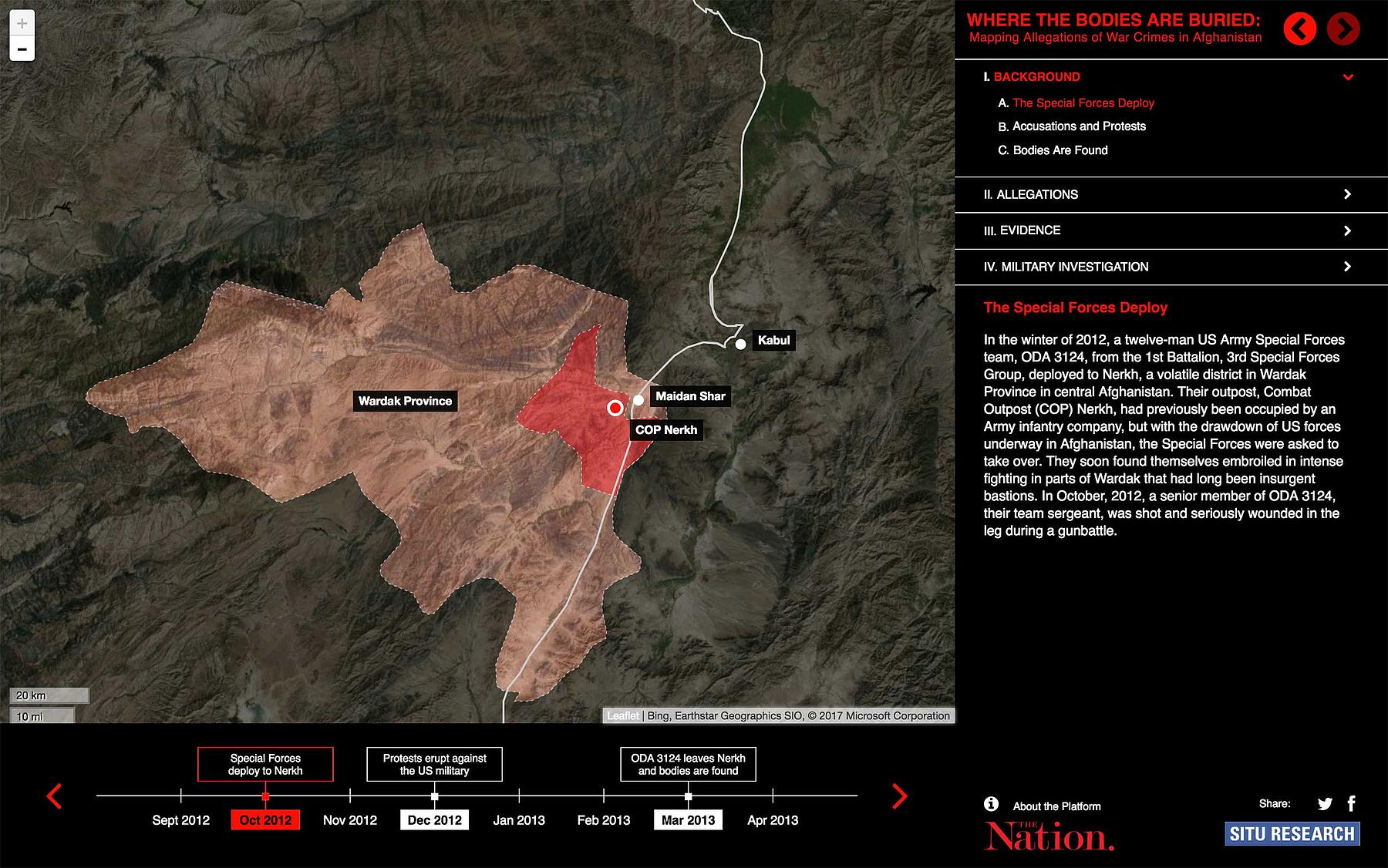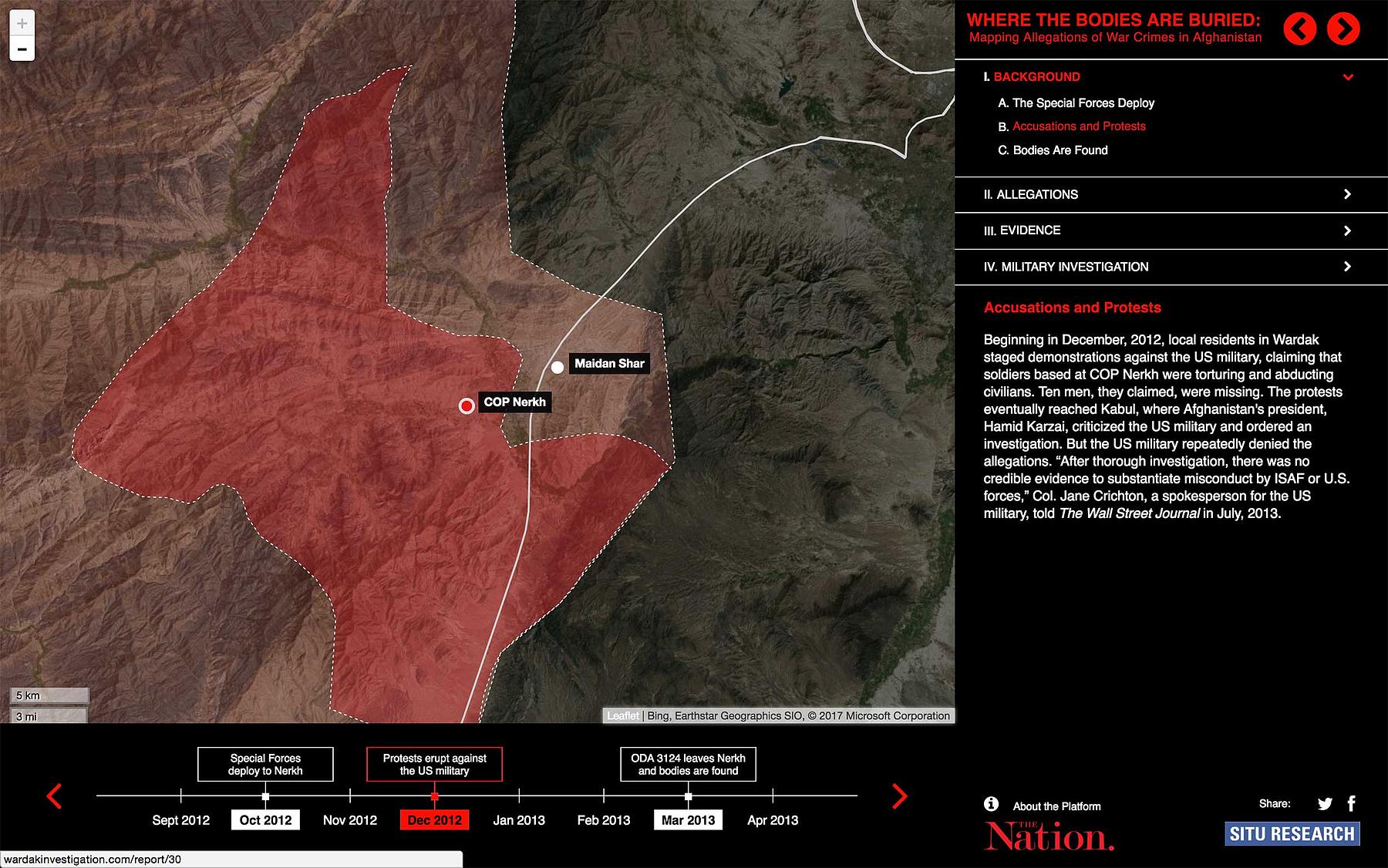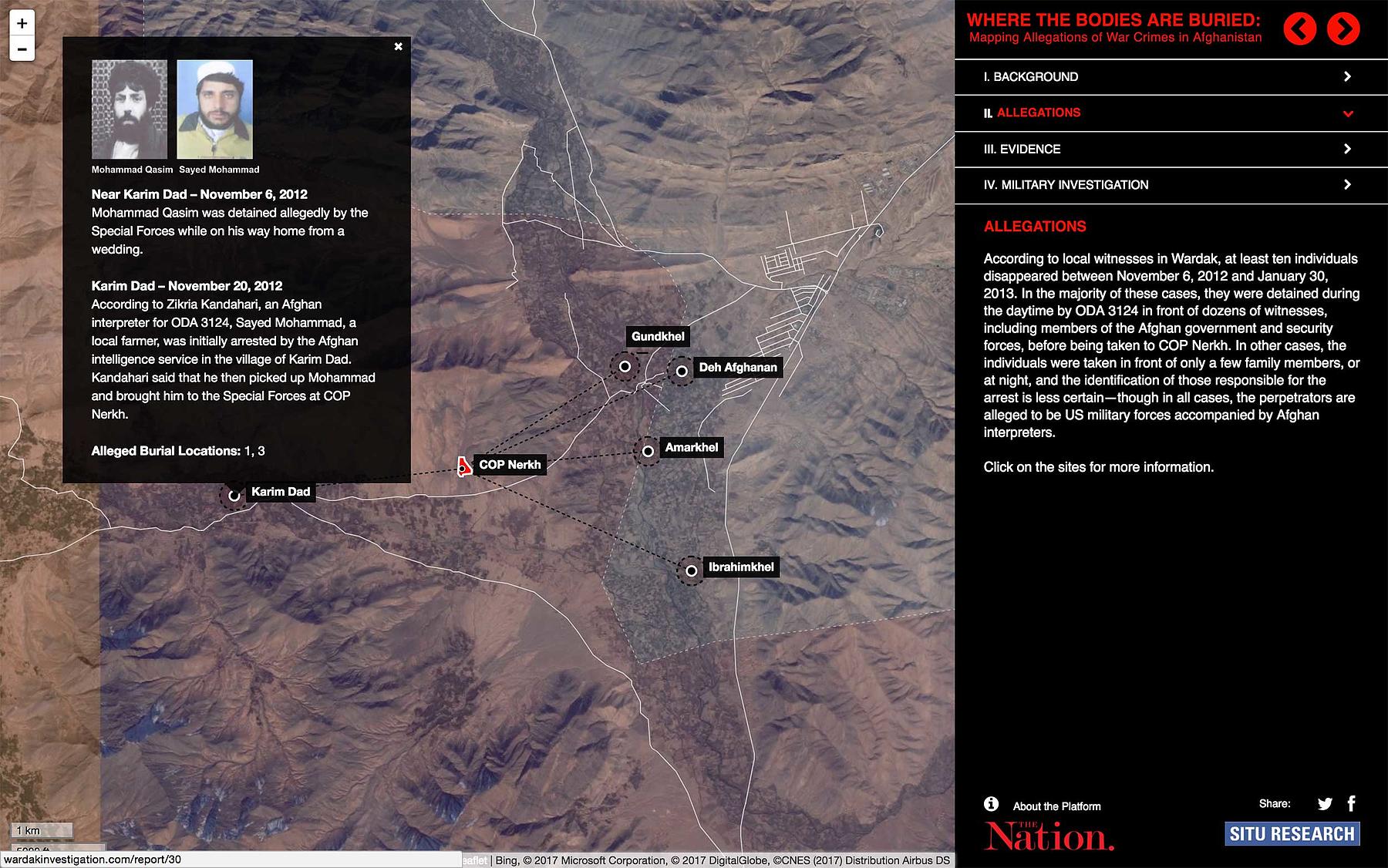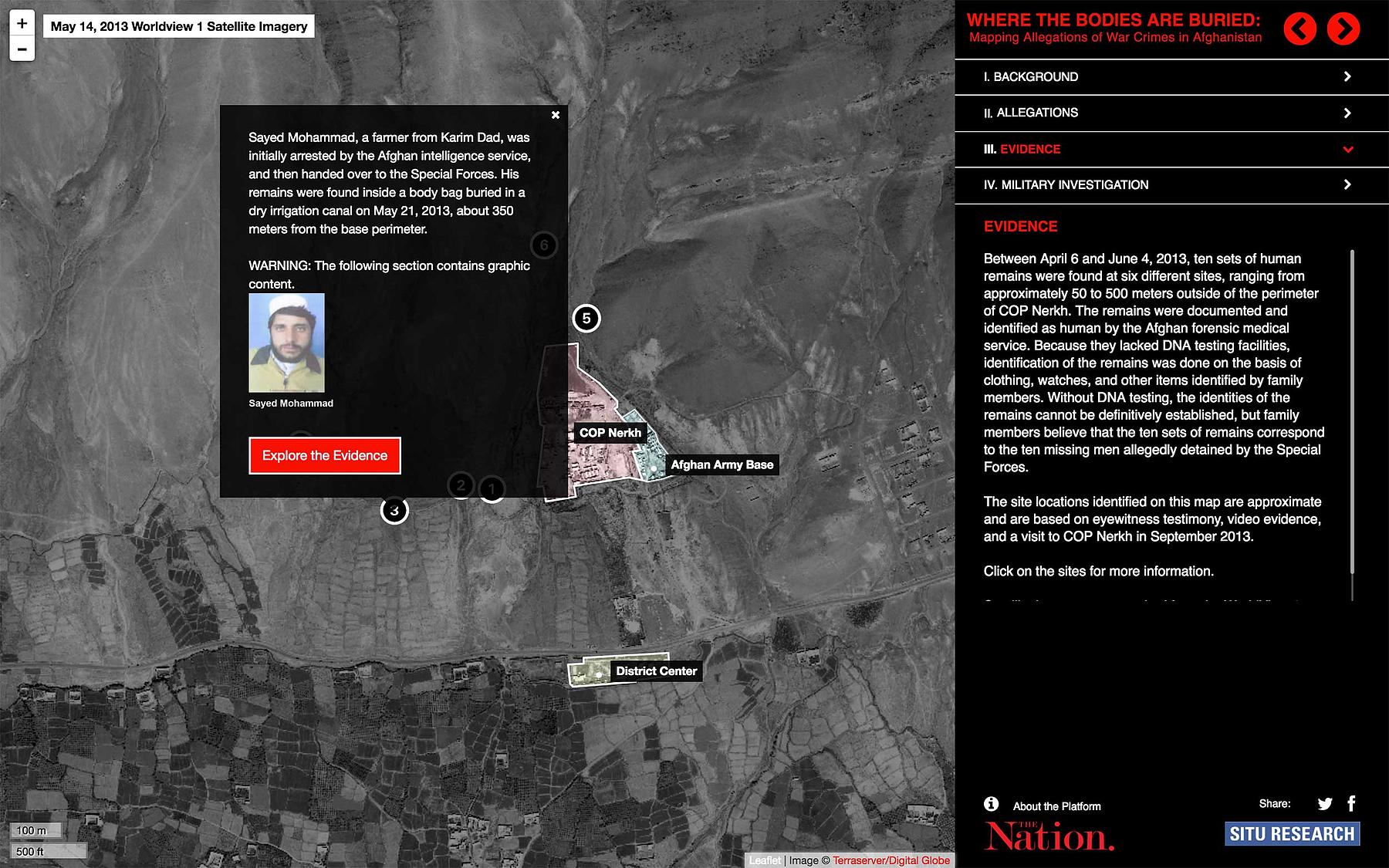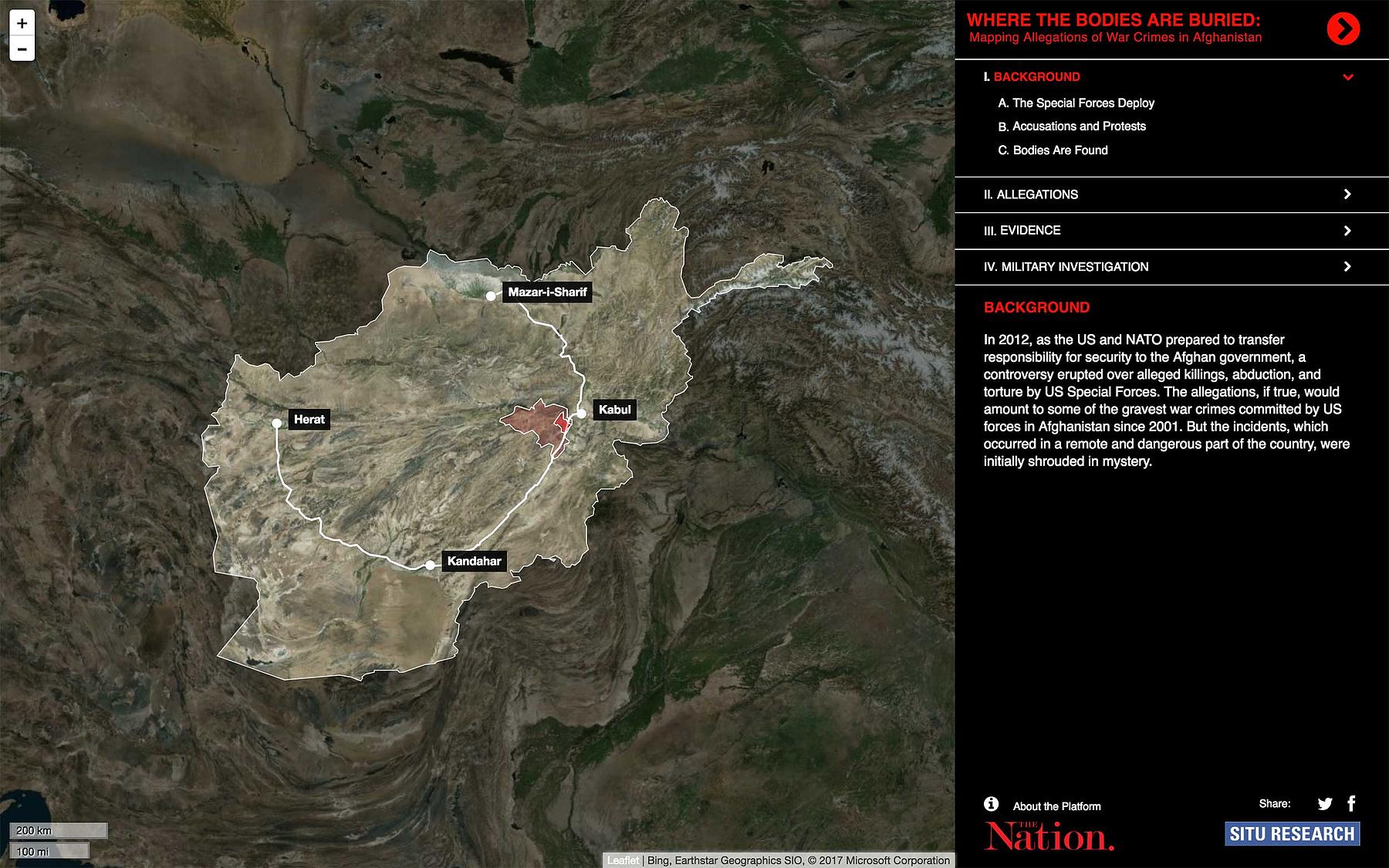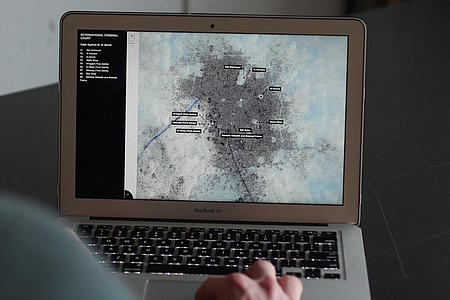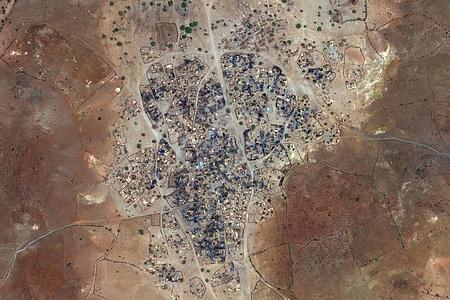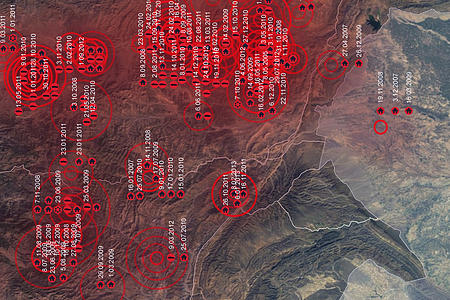Where The Bodies Are Buried
An interactive report for the exploration and presentation of evidence related to alleged U.S. War Crimes in Nerkh, Afghanistan.
Explore the platform here:
http://wardakinvestigation.com
In collaboration with The Nation fellow and journalist Matthieu Aikins, SITU Research released an interactive, digital platform documenting the evidence for alleged U.S. war crimes in Nerkh, Afghanistan. Providing a robust report on the death, detainment, and torture of civilians in Nerkh, the platform synthesizes historical satellite imagery, photographs and videos with a geospatial portal. Through this collaboration, Aikins and SITU aim to share the evidence surrounding the case with a wider public and foster greater accountability for U.S. military-civilian relations in Afghanistan.
The platform lays out an investigation into a US Army Special Forces unit (ODA 3124), which has been accused of murdering and torturing Afghan civilians during the fall of 2012. Accusations first emerged in November 2013 when journalist Matthieu Aikins published a Rolling Stone article about these alleged war crimes and incorporated eyewitness testimony from local civilians and the military’s interpreters. Aikins continued his investigation with a September 2015 piece in The Nation, where he released additional details and testimony.
Aikins collaborated with SITU Research to geospatially present the details of the investigation through an interactive website. Released in conjunction with another article in The Nation, the platform provides background information, photos and video related to six separate sites in close proximity to a former US Forward Operating Base (FOB Nerkh), where ten sets of human remains were discovered in 2013.
This platform leverages interactive, multi-scalar visualizations to provide relevant contextual information, to illustrate the course of events leading to the detainments and to outline the allegations against the special forces unit. Text and visual information is presented linearly, as in a typical narrative report. In contrast, visual and spatial evidence integrates with a geospatial portal, thereby rendering the data in real-time. The result is a powerful platform that expands access to the evidence to a wider public and allows the user to explore the investigation’s details independently.
The project works not only to bring attention and accountability to the deaths of Afghan detainees, but also to question the enforcement of the Uniform Code of Military Justice.
By contrasting the journalistic allegations with the military’s internal review process, the report highlights the need to reform methods of accountability associated with courts-martial.
In this regard, the Army’s Criminal Investigation Command recently restarted an investigation into these alleged war crimes, which is expected to conclude in the coming months (although a specific timeline has not been announced). Once the Army’s investigation is made available, it will be added in its original form as the final chapter of the platform. Taken together, the interactive report and the Army’s official investigation will offer an unprecedented level of public access and accountability for military action in one of the most remote and often overlooked corners of the globe.
This work was undertaken as part of the Spatial Practice as Evidence and Advocacy project, a SITU Research led initiative funded in part by a grant from the John D. and Catherine T. MacArthur Foundation and the Oak Foundation.
